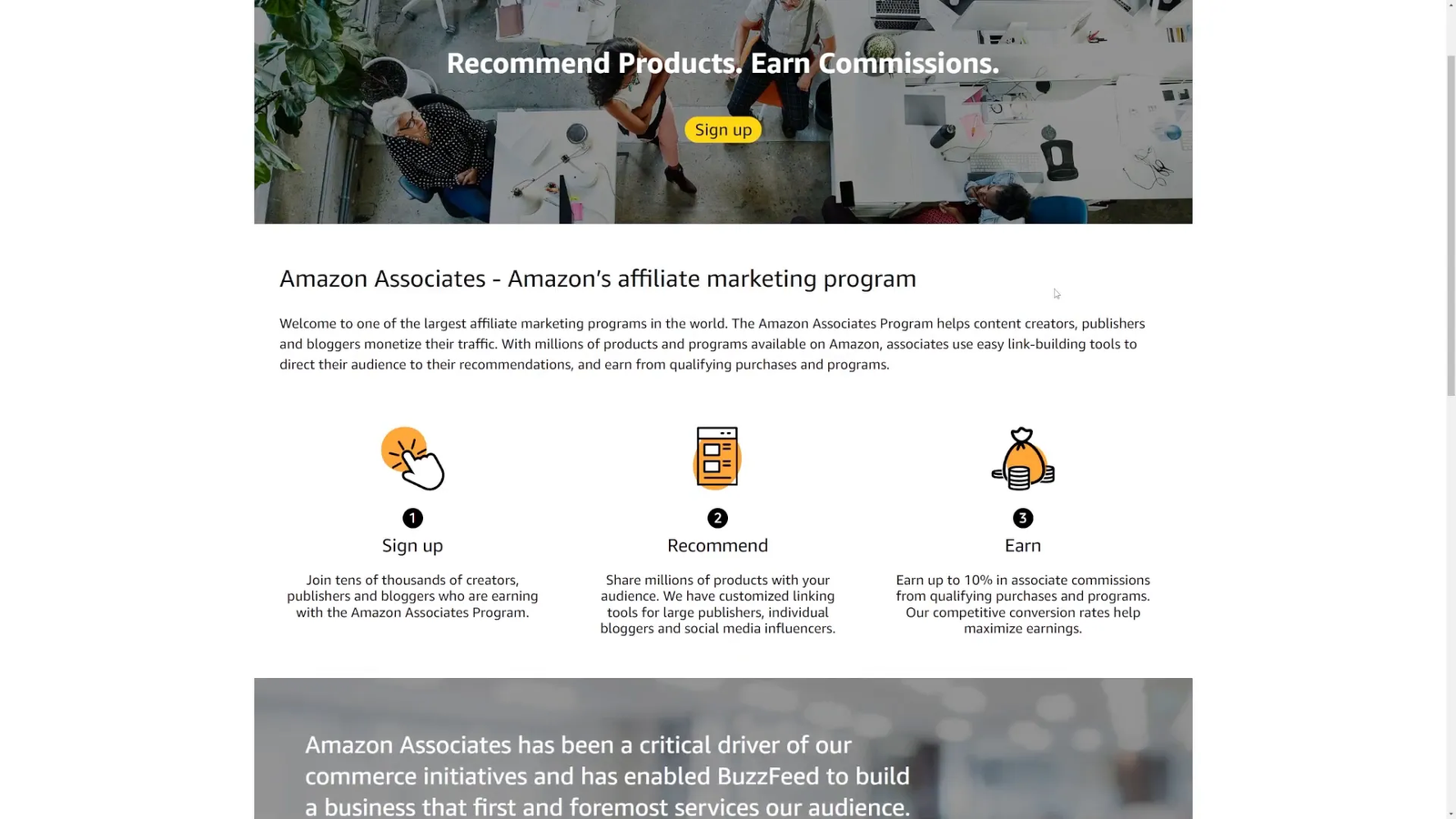Affiliate Marketing
2025 trends, Affiliate Marketing, affiliate marketing strategies, Affiliate Programs, AI personalization, Beginner's Guide, content creation, data-driven decisions, market demand analysis, mobile optimization, transparency in marketing, video marketing
affiliatemarketingrlarson
0 Comments
Affiliate Marketing in 2025: A Beginner’s Journey to Success

When I first stumbled upon affiliate marketing, I was both intrigued and overwhelmed. How could I, a regular person, tap into this world where you could earn money while you sleep? This guide aims to simplify the complexities of starting your own affiliate marketing journey in 2025, filled with current trends, personal insights, and actionable steps.
The Dynamic Landscape of Affiliate Marketing
Affiliate marketing is evolving rapidly. With advancements in technology, the way we market products is changing. Let’s dive into some key trends that are shaping this dynamic landscape.
1. How AI is Changing the Game for Personalization
Artificial Intelligence (AI) is more than just a trend. It’s a revolution in how we connect with consumers. Think about it: how often do you see ads that seem to know exactly what you want? That’s AI at work.
- Automated Content Recommendations: AI can analyze user behavior and suggest products tailored to individual preferences.
- Smart Audience Targeting: Marketers can now reach specific demographics, increasing the chances of conversion.
- Predictive Analytics: By analyzing data, AI helps in optimizing strategies for better results.
As John Doe aptly puts it,
“AI isn’t just a buzzword; it’s the backbone of future marketing strategies.”
It’s clear that embracing AI is crucial for anyone looking to thrive in affiliate marketing.
2. The Rise of Video Content in Affiliate Strategies
Video content is taking the affiliate marketing world by storm. Have you noticed how engaging videos can be? They capture attention in a way that text simply can’t. Here are some insights:
- Short-form Video: Platforms like TikTok and Instagram Reels are perfect for quick product promotions.
- Live Shopping: This trend allows viewers to purchase products in real-time, creating a unique shopping experience.
- Video Reviews: Over 50% of consumers prefer video content for product research. It’s a powerful tool for building trust.
We can no longer ignore the impact of video. It’s not just a passing fad; it’s becoming a staple in affiliate strategies.
3. Understanding the Mobile-First Approach
In today’s world, most people use their phones to browse and shop. This is why a mobile-first approach is essential. Here’s what that means:
- Mobile-Optimized Content: Ensure your website and content are easily accessible on mobile devices.
- App-Based Affiliate Programs: Many consumers prefer shopping via apps. This is an opportunity for marketers.
- Voice Commerce: With the rise of smart assistants, voice search is becoming a game-changer.
By understanding these trends, we can position ourselves better in the market. It’s all about meeting consumers where they are.
In conclusion, staying updated with the latest trends in affiliate marketing is essential. The landscape is shifting, and those who adapt will thrive. Let’s embrace these changes and move forward together!
Kickstarting Your Affiliate Marketing Adventure
Starting in affiliate marketing can feel overwhelming. But it doesn’t have to be. We can break it down into manageable steps. Let’s dive into the essentials.
1. Identify Your Passion for Niche Selection
Choosing the right niche is crucial. It can shape your entire affiliate journey. Ask yourself: What am I passionate about? What do I enjoy talking about? This is not just about making money; it’s about creating content you love. When you’re passionate, it shows. Your audience will feel that energy.
Consider these factors:
- Market demand: Is there a need for your niche?
- Competition: How many others are in this space?
- Profitability: Can you earn a decent income from it?
As Jane Smith wisely said,
“The most successful niches are those that resonate personally with the marketer.”
So, pick something that truly interests you.
2. Build a User-Friendly Platform
Your platform is your home base. Whether it’s a blog, website, or social media, it needs to be user-friendly. Think about your audience. What do they want? A clean design? Easy navigation? Fast loading times? All these factors matter.
Here are some tips:
- Start a blog or website focused on your niche.
- Create a strong social media presence.
- Develop a content strategy that aligns with your goals.
- Optimize for mobile users, as many people browse on their phones.
A strong online presence is crucial for attracting audiences. If your platform is appealing, visitors are more likely to stay and explore.
3. Choose Affiliate Programs That Align with Your Goals
Not all affiliate programs are created equal. You need to select those that fit your niche and your audience’s needs. Look for programs that offer good commissions and have a solid reputation.
Some popular options include:
- Amazon Associates
- ClickBank
- Commission Junction
- Direct brand partnerships
When you choose wisely, you set yourself up for success. Remember, the average affiliate marketer earns over $50,000 annually. That’s a solid incentive!
In conclusion, taking your first steps in affiliate marketing requires strategic planning and passion-driven selection of your niche. By identifying what you love, building a user-friendly platform, and choosing the right affiliate programs, you’re on the right path.
Mastering Content Creation and Marketing Skills
Creating effective content is essential in today’s affiliate marketing world. Quality content is king. It builds trust and fosters relationships. But how do we achieve that? Let’s explore some key strategies.
1. Create Authentic Product Reviews That Build Trust
When I write product reviews, I aim for authenticity. Honesty is crucial. If I genuinely like a product, I share my positive experiences. If not, I express my concerns. This transparency resonates with readers. It makes them feel connected to me.
- Be specific about features and benefits.
- Include personal anecdotes to illustrate your points.
- Encourage feedback and interaction.
Think about it: Would you trust a review that feels scripted or overly promotional? Probably not. Authenticity is what builds trust.
2. Leverage SEO Practices for Better Visibility
Next, let’s discuss SEO. It’s not just a buzzword. SEO is vital for being discovered in a crowded market. I’ve seen that content marketing generates three times more leads than traditional outbound marketing. That’s powerful!
- Use relevant keywords naturally.
- Optimize meta descriptions and titles.
- Focus on quality backlinks.
Imagine your blog popping up on the first page of Google. That’s the magic of SEO. It opens doors to new audiences.
3. Engage Your Audience with Powerful Storytelling
Storytelling is another effective tool. It transforms dull content into engaging narratives. People remember stories. They connect with them. When I share a story, I’m not just providing information. I’m creating an experience.
- Use relatable characters or scenarios.
- Incorporate emotions to draw readers in.
- End with a call to action that encourages interaction.
As Jonathon Colman wisely said,
“Content marketing is a commitment, not a campaign.”
This commitment involves consistently delivering engaging stories that resonate with your audience.
In conclusion, effective content creation involves more than just writing. It’s about building relationships. It’s about trust. By focusing on authentic reviews, optimizing for SEO, and engaging through storytelling, we can create impactful content. This approach is crucial for long-term success in affiliate marketing.
Let’s remember: quality content not only persuades but also builds lasting relationships with our audience. That’s the key to thriving in this ever-evolving landscape.
The Do’s and Don’ts of Affiliate Marketing
Affiliate marketing can be a rewarding venture. But it comes with its own set of rules. Let’s dive into the do’s and don’ts that can help you navigate this landscape successfully.
1. Always Disclose Your Affiliate Partnerships
Transparency is crucial. When you promote products or services, always let your audience know about your affiliate partnerships. Why? Because trust is everything. In fact, 92% of consumers prefer to engage with brands that are open about their affiliations. If you hide this information, you risk losing credibility.
Think about it: would you trust someone who doesn’t reveal they’re getting paid for a recommendation? I wouldn’t. Disclosing your partnerships not only builds trust but also aligns with legal requirements in many regions. It’s a win-win!
2. Avoid Over-Promoting
Quality over quantity should be your mantra. It’s tempting to push multiple products to maximize your earnings. However, this can lead to audience fatigue. Instead, focus on a few select products that you believe in. Create content that offers real value.
- Provide honest reviews.
- Share personal experiences.
- Engage your audience with useful information.
Remember, over-promotion can turn your audience away. It’s better to have a smaller, loyal following than a large audience that doesn’t trust you.
3. Invest Time in Learning and Networking
Continuous learning is vital in affiliate marketing. The landscape is always changing, and so should your strategies. Attend webinars, read articles, and connect with other marketers. Networking can boost your success significantly. Marketers who network regularly see 30% more success in conversions. That’s a huge difference!
Take the time to learn about new tools, trends, and techniques. The more informed you are, the better decisions you’ll make. Plus, you’ll be able to adapt quickly to market changes.
Final Thoughts
As Lucy Adams wisely said,
“The key to longevity in affiliate marketing is genuine engagement and continuous adaptation.”
This quote resonates deeply with the essence of affiliate marketing. By being transparent, focusing on quality, and committing to ongoing learning, you can build a successful affiliate marketing strategy.
Understanding common mistakes can save you time and effort as you build your affiliate marketing strategy. So, keep these do’s and don’ts in mind as you embark on your journey!
Preparing for a Future in Affiliate Marketing
As we look ahead, the world of affiliate marketing is changing rapidly. We must adapt to these changes to stay relevant. The key is to embrace new technologies and media trends. Think about it: how often do you use your phone for shopping? Trend reports suggest that mobile commerce will see a 40% increase by 2025. That’s huge! So, how can we prepare for this shift?
Embrace New Technologies
Technology is evolving at a breakneck speed. To thrive, we need to stay ahead of the curve. This means leveraging AI-powered personalization and optimizing our content for mobile devices. Imagine how much more effective our marketing could be if we could target audiences with precision. It’s like having a superpower!
We should also explore video content. Short-form videos are dominating social media. Integrating video reviews and live shopping could elevate our affiliate marketing game. Have you tried it yet?
Stay Compliant with Privacy Regulations
Another crucial aspect is compliance with privacy regulations. As privacy laws tighten globally, it’s essential to understand how they affect our data usage. This isn’t just about avoiding fines; it’s about building trust with our audience. Transparency is key. Always disclose your affiliate relationships. Remember, trust is the foundation of loyalty.
Foster Genuine Relationships
Building authentic connections with our audience can set us apart. It’s not just about selling products; it’s about creating a community. When people feel valued, they become loyal customers. They return, they recommend, and they engage. How do we do this? By being genuine in our interactions and providing real value.
As Mark Johnson wisely said,
“Future-proofing your marketing strategy is essential in a rapidly changing environment.”
This quote resonates deeply. We must continuously learn and adapt. The affiliate marketing landscape will keep evolving, and we need to be ready.
In conclusion, to remain competitive and relevant in affiliate marketing, we must embrace new technologies, comply with privacy regulations, and foster genuine relationships with our audience. The journey may be challenging, but with dedication and a willingness to adapt, we can thrive in this dynamic environment. Let’s take these steps together and prepare for a successful future in affiliate marketing!
TL;DR: To succeed in affiliate marketing in 2025, focus on niche selection, platform building, quality content, and data-driven strategies while avoiding common pitfalls.


